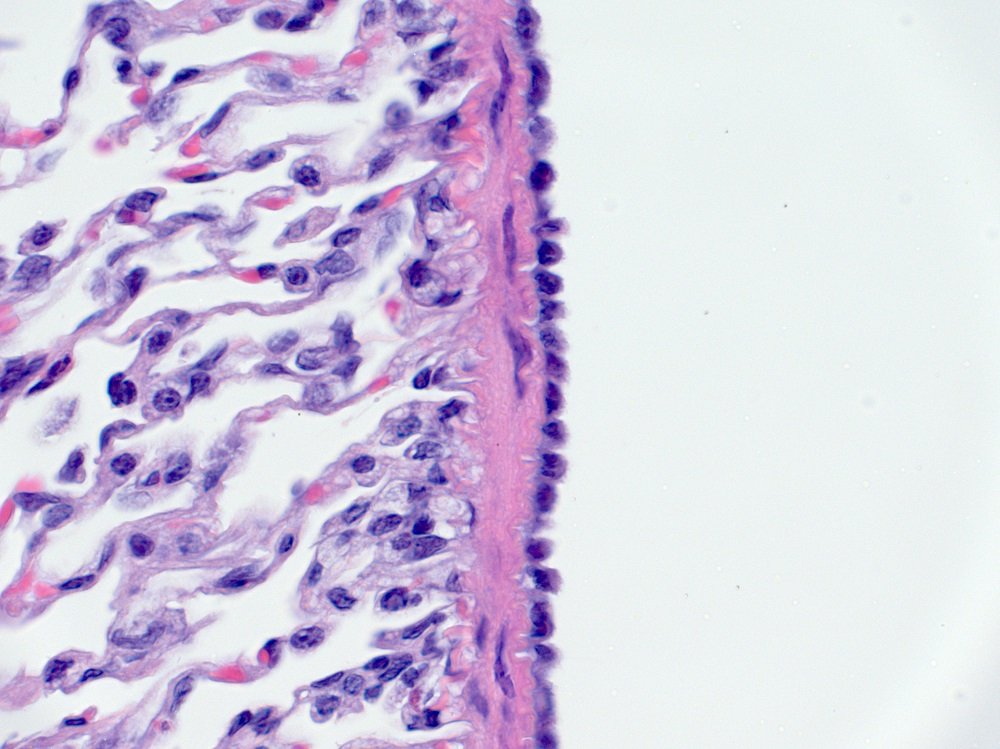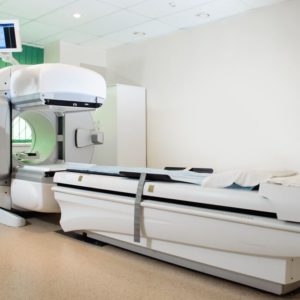What is Asbestos Lung Cancer?

There’s no way to prepare for an asbestos lung cancer diagnosis. It can be challenging to understand the implications until treatment begins. Treatment also comes with an uncertain prognosis and expensive medical bills. Figuring out how to plan for the future becomes an unexpected side effect of asbestos lung cancer.
Fortunately, patients don’t have to tackle these burdens alone. Financial resources are available to help patients take control of their medical care and ensure that their loved ones will be cared for during their cancer battle and beyond.
Many companies that manufactured asbestos were aware of the health hazards but did not inform people of the risks. As a result, workers are in danger of developing deadly diseases like asbestos lung cancer, mesothelioma and asbestosis. Today, innocent victims with asbestos lung cancer are taking legal action to make those companies pay for their negligence.
Even for people who smoked, asbestos could still be a cause of lung cancer. Contact us for more information.
The Connection Between Asbestos and Lung Cancer
It takes a long time for people who have been exposed to asbestos to begin experiencing symptoms of asbestos-related diseases. Even if you worked with asbestos decades ago, your exposure could still result in an asbestos lung cancer diagnosis now.
Asbestos is a material that was used in a variety of industrial and household products. Invisible fibers that are released into the air can get lodged in the delicate tissues in and around the lungs. Over time, the microscopic fibers may cause the cells in those areas to malfunction and become cancerous.
There is no safe level of asbestos exposure. Some people who develop asbestos lung cancer only had brief exposures. Others were exposed to high doses of asbestos on the job, yet never develop a related respiratory condition. However, research has shown that for every year a person was exposed to asbestos, the risk of lung cancer increases up to 4 percent.
Risk Factors for Asbestos Lung Cancer
People who worked in industries where asbestos was commonly used are at risk for lung cancer. That includes employees from a number of trades, such as construction, mining, manufacturing, milling and textile work. Roofers, plumbers, electricians, demolition workers, insulation installers, automotive mechanics and shipbuilders may have also been exposed to asbestos on the job.
However, working in an asbestos-related occupation is not the only risk factor for an illness like asbestos lung cancer. According to the National Cancer Institute, several other things may predispose some people to asbestos illnesses. They are:
- The dose of asbestos exposure
- How long the exposure lasted
- The size, shape and composition of the asbestos fibers
- The source of the exposure
- Individual and genetic factors
Family members of people who worked in asbestos industries may also be at risk for asbestos lung cancer through secondhand exposures. Patients should always tell their doctors if they lived with someone who worked with asbestos so that it isn’t overlooked upon examination.
Symptoms of Asbestos Lung Cancer
Diagnosing asbestos lung cancer can be tricky. Many of the symptoms are non-specific, so people may initially dismiss them as the lingering effects of a cold or a minor infection. The unfortunate result is that many people aren’t diagnosed with asbestos lung cancer until they are in the late stages of the disease.
Contact a doctor immediately if any of these symptoms arise:
 Chest pain or tightness
Chest pain or tightness- Chronic cough
- Coughing up blood
- Repeated cases of bronchitis or pneumonia
- Shortness of breath
- Wheezing
- Difficulty swallowing
- Swelling in the neck or face
- Loss of appetite
- Unexplained weight loss
- Fatigue
- Anemia
Patients should always mention any occupational history of asbestos exposure to their physicians. They should also report any tobacco history, but remember that cigarettes alone are not the only cause of lung cancer. Researchers in the American Journal of Respiratory and Critical Care Medicine said in 2013 that enough evidence exists to say that “asbestos exposure alone is capable of causing lung cancer.”
Diagnosing Asbestos Lung Cancer
A prompt and accurate diagnosis of asbestos lung cancer allows for more treatment options and a better prognosis. Doctors use a variety of diagnostic methods to verify suspected cases of asbestos lung cancer, including:
- Physical examination: Swollen lymph nodes, weak breathing and abnormal sounds in the lungs might compel a physician to take a closer look at the respiratory system.
- Imaging tests: X-rays, MRIs, CT scans and PET scans may show tumors in or around the lungs.
- Biopsy: The only way to confirm an asbestos lung cancer diagnosis is through a biopsy to examine lung and pleural tissues under a microscope. A doctor may recommend a bronchoscopy, sputum cytology or other medical tests to look for asbestos fibers in the lungs.
Types of Asbestos Lung Cancer
Asbestos lung cancer may be categorized into two types based on its cell appearance. Non-small-cell lung cancer is the most common form of the disease, making up 80 to 85 percent of all lung cancers. Small-cell lung cancer is less common, but it grows faster and spreads more quickly.
Both types of lung cancer disease have similar symptoms, but the treatment approaches are different. That’s why a biopsy is so important. Doctors need to identify exactly what type of cells are causing the patient’s asbestos lung cancer to achieve the best prognosis.
Non-small-cell lung cancer provides the most treatment options. Doctors may suggest surgery, chemotherapy, radiation therapy or other types of care.
Unfortunately, the options are more limited for small-cell lung cancer. By the time it is diagnosed, the disease has usually spread. Surgery is rarely an option because the tumors are too large. Doctors instead opt for a combination of chemotherapy and radiation therapy called concurrent chemoradiation, which has been found to be the most effective at prolonging life for patients with limited stage small-cell lung cancer.
Asbestos Lung Cancer vs. Pleural Mesothelioma
Asbestos lung cancer is not the same as mesothelioma, another type of asbestos-related malignancy that occurs in the chest cavity. The symptoms of both diseases are very similar. But there are some key differences:
- Tumor location: Asbestos lung cancer originates inside of the lung. Mesothelioma attacks the mesothelium, the thin protective tissues surrounding the lungs.
- Tumor appearance: Asbestos lung cancer tumors are well-defined, individualized masses. Mesothelioma tumors are scattered, eventually forming a sheath around the affected organs.
- Cause: The only known cause of mesothelioma is asbestos exposure. Asbestos lung cancer is also linked to asbestos exposure.
- Latency period: Symptoms of asbestos lung cancer and mesothelioma both take many years to manifest. However, lung cancer appears to have a shorter latency period, with symptoms appearing anywhere between 10 and 30 years after exposure. It can take as long as 60 years to experience signs of mesothelioma.
It’s important for doctors to differentiate asbestos lung cancer from mesothelioma because treatment plans may differ depending on which disease the patient has.
Asbestos Lung Cancer vs. Asbestosis
Asbestos lung cancer should also not be mistaken for asbestosis. Both diseases are caused by exposure to asbestos. But asbestosis is a benign, chronic lung condition characterized by scarring in the lungs.
Asbestosis causes breathing problems and other symptoms similar to asbestos lung cancer, such as a cough and shortness of breath. But asbestosis does not cause lung cancer. However, people who suffer from asbestosis have a greater risk of developing lung cancer over time.
Treatment for Asbestos Lung Cancer
 Asbestos lung cancer is a serious illness. There is no universal course of treatment. Doctors must decide the best treatment options based on the specifics of each individual case. That includes evaluating the patient’s age, the stage of the disease and much how treatment the patient can withstand in his or her current condition.
Asbestos lung cancer is a serious illness. There is no universal course of treatment. Doctors must decide the best treatment options based on the specifics of each individual case. That includes evaluating the patient’s age, the stage of the disease and much how treatment the patient can withstand in his or her current condition.
The patient’s wishes matter, too. Some people in the late stages of asbestos lung cancer may prefer palliative care rather than experience the harsh side effects that can come from more aggressive therapies.
Possible treatments for asbestos lung cancer include:
- Surgery: Because asbestos lung cancer tumors have clear boundaries, resection (removal of the mass and some surrounding healthy tissues) may be an option. Doctors could also recommend a lobectomy or pneumonectomy.
- Chemotherapy: Doctors can prescribe drugs to kill the cancer cells. Patients with asbestos lung cancer might undergo chemotherapy after surgery or in combination with radiation therapy.
- Targeted drug therapy: Like chemotherapy, drugs are used to attack asbestos lung cancer cells. But rather than kill the cells like traditional chemotherapy, targeted therapy drugs attack the inner abnormalities of cancer cells while leaving the healthy cells alone. This can stop the cancerous cells from growing and dividing. Targeted therapy is often used in conjunction with other asbestos lung cancer treatments.
- Radiation therapy: Oncologists use high-energy X-rays to kill asbestos lung cancer cells. Radiation can help destroy, shrink or control the cells. It may be used in patients who aren’t candidates for asbestos lung cancer surgery or as part of a multi-modal course of treatment.
- Immunotherapy: Sometimes the body’s immune system fails to recognize asbestos lung cancer cells as foreign. Doctors use immunotherapy drugs in an attempt to stimulate the patient’s immune system to be able to identify and kill those cells.
- Clinical trials: The search for a cure to asbestos lung cancer is ongoing. A doctor can suggest whether a patient is eligible to participate in any clinical trials.
- Palliative care: Patients in the end stages of asbestos lung cancer may use a combination of these treatments to maintain comfort rather than fight for a cure.
Compensation for Asbestos Lung Cancer Victims
Coping with asbestos lung cancer can be physically, financially and emotionally draining. The cost of cancer treatment alone is skyrocketing, leaving many victims wondering how to get quality medical care and still make ends meet.
Remember, financial help is available for asbestos lung cancer patients and their families. Companies that failed to inform workers about the health risks associated with asbestos exposure can be held liable for the harm they have caused. Compensation can cover losses such as:
• The cost of past, current and future medical treatments (including hospitalizations, prescriptions, doctor’s visits and any assistive medical care devices)
• Travel expenses required to receive medical care
• Lost income, lost wages and lost earning capacity in the future
• Pain and suffering from asbestos lung cancer
• Funeral and burial expenses for family members in a wrongful death claim
A knowledgeable asbestos lung cancer attorney can help you obtain the financial relief that you deserve. Asbestos disease claims can be complex, so you need a top-rated legal team by your side. An attorney can analyze your employment history to identify which companies are liable for your asbestos exposure.
 There are a number of possible sources for compensation in an asbestos lung cancer claim. Patients may be eligible to file lawsuits against negligent companies to recover compensation through a jury verdict or settlement. The lawsuit is typically against the manufacturer of the asbestos product, not a former employer or the military. Asbestos companies that went bankrupt also set up trust funds to compensate victims with asbestos-related diseases like asbestos lung cancer and mesothelioma.
There are a number of possible sources for compensation in an asbestos lung cancer claim. Patients may be eligible to file lawsuits against negligent companies to recover compensation through a jury verdict or settlement. The lawsuit is typically against the manufacturer of the asbestos product, not a former employer or the military. Asbestos companies that went bankrupt also set up trust funds to compensate victims with asbestos-related diseases like asbestos lung cancer and mesothelioma.
Your occupational history may also entitle you to money through VA disability benefits, Social Security benefits or a state workers’ compensation program.
You deserve to know your legal rights if you’re suffering from asbestos lung cancer. It doesn’t cost a penny to learn about your options. If you do decide to hire an asbestos lung cancer lawyer, no fee is required unless the attorney recovers compensation on your behalf.
Contact us today to arrange a free consultation with no strings attached.
Sources:
- •American Journal of Respiratory and Critical Care Medicine: “Asbestos and Lung Cancer: What We Know”
- National Cancer Institute: Asbestos Exposure and Cancer Risk Fact Sheet
 Chest pain or tightness
Chest pain or tightness